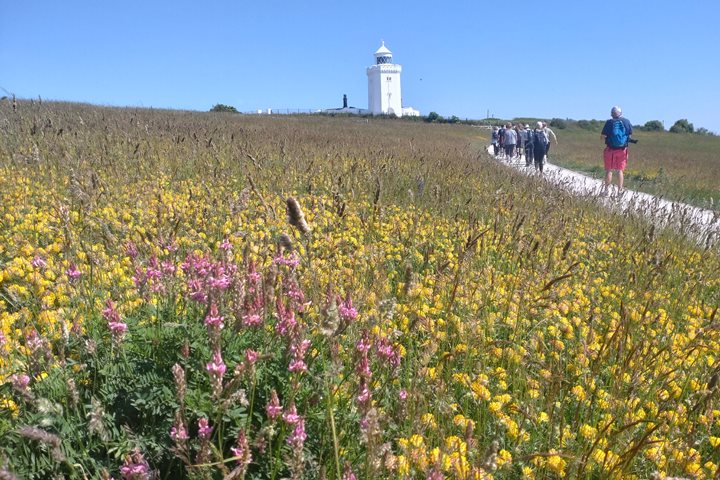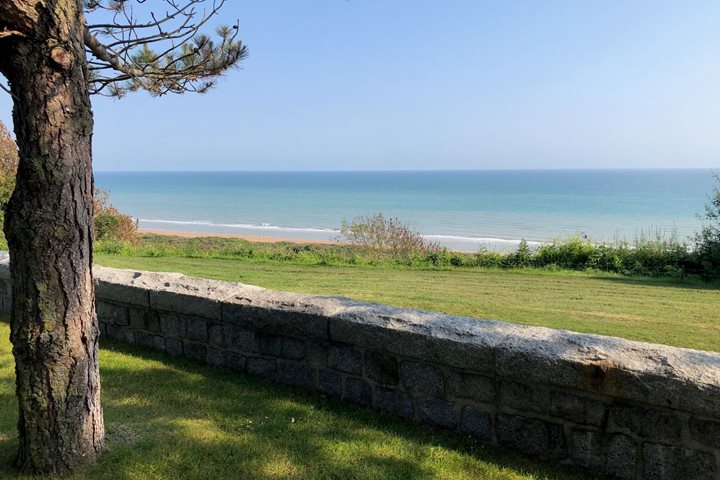Early morning found National Geographic Explorer making its way up the Trave River to the Hanseatic city of Lübeck. The morning was foggy and dreamlike, and it soon became a beautiful, sunny day. We docked on the edge of the historic city, the premier city of the celebrated Hanseatic League, close to everything. We spent the entire day exploring, learning, and eating good stuff.
- Daily Expedition Reports
- 08 Jun 2023
Lübeck, Germany, 6/8/2023, National Geographic Explorer
- Aboard the National Geographic Explorer
- Europe & British Isles
Dennis Cornejo, Naturalist
Dennis has spent more than half of his life working with Lindblad Expeditions. He first studied biology in the Sonoran Desert. It was his work with the Arizona-Sonora Desert Museum that brought him into contact with Sven Lindblad. Dennis was working ...
Read MoreShare Report
Related Reports
6/14/2023
Read
National Geographic Explorer
The Normandy Beaches
For many guests on the voyage, this was the day they were most anticipating. We spent the whole day visiting sites of the D-Day invasion and the 100-day Normandy battle. Expectations were high in our hearts and minds after a visit to the Caen Memorial yesterday and a very thorough introduction to the events (and their magnificent logistics) by Stephen Fisher. Our tour began with a drive through the peaceful countryside that is marked with verdant hedges – once a major obstacle for the Allied soldiers – to the great American Cemetery at Colleville-sur-Mer, which overlooks the Omaha beaches. It is hard to describe such a visit: ‘the countless white crosses stand mute in the sand,’ as the song has it. Cared for to perfection, the splendid park is a place of quiet and deep respect. Some guests went looking for a specific cross with a specific name. Others just walked over the lawn in silence. From there, we took a short drive through narrow, winding lanes to the beach itself. The tide was going out. Apart from two striking monuments, very little reminds visitors of the events that took place there. Nevertheless, simply looking up at the high range of dunes, which incoming troops had to overcome, is quite impressive. A new monument created by Anilor Banon stands on the beach: an array of striking, shining metal objects, like the leaves of giant plants, the monument is entitled Les Braves, or the Brave: ‘sons, husbands and fathers, who risked their lives and often sacrificed their lives in the hope of liberating the French.’ We had the chance to reflect and restore ourselves during lunch in the very pretty fishing town of Port-en-Bessin-Hupain. Soon, we moved to a new location, Pointe du Hoc. In the early morning of the landings, 225 Rangers climbed up the steep cliff and attacked what they believed was a formidable German battery of five 155 mm guns. They occupied the spot with heavy losses only to find that the guns had been removed just before the invasion. The Rangers held on; only 90 men were standing by the time they were relieved. In this peaceful, sunny place, we observed crumbling bunkers and deep pits everywhere, signs of a massive bombardment by the supporting fleet. Then we moved to Utah Beach, where we again spent a short time with the powerful monuments and the vast space above us – a sunny day, where the day of the invasion had been wet and cloudy. Half an hour farther inland is Ste Mère Eglise, a small town and the scene of a dramatic nightly landing by troops of the 82nd Airborne. Legend has it – and for a change, the legend is true – that one of the men, Steele, managed to get his parachute trapped on the spires of the parish church. He was shot at, wounded, and pretended to be dead before he was cut loose and made prisoner. In Ste Mère Eglise, signs of the Airborne raid are everywhere – in the brand new Airborne Museum, which some of us visited, in the numerous Army Surplus Stores around the town square, which have a lively trade in t-shirts and memorabilia, and even in the ‘Hair born’ barbershop. There was also room for some good French ice cream and a beer or two, but this was not a day that passed without emotion. And then, we covered the last stretch to Cherbourg, where National Geographic Explorer was alongside, ready to take us to Dover.
6/13/2023
Read
National Geographic Explorer
Normandy, France
Dawn rose over the Normandy coastline early, just as it did 79 years ago. Tracing a route used by the Allied task forces on June 6, 1944, National Geographic Explorer approached Ouistreham in the early morning. Talks by D-Day historian Stephen Fisher and art historian Matthew Whyte occupied the morning until we approached the locks of the Caen Canal. Once through, our great ship transited the narrow canal and soon reached Pegasus Bridge. The first objective of D-Day, the bridge was captured in the very early hours on the morning of 6 June by soldiers who landed by glider on the banks of the canal. On arrival at our berth in Caen, we were joined by the local band Mes Souliers Son Rouges (My Shoes Are Red), who treated us to a performance of folk music. After lunch, groups dispersed from the ship. One group visited the fabulous medieval city of Bayeux and spent time examining the famous Norman-era Bayeux Tapestry and the magnificent cathedral. The other groups toured sites associated with the Second World War. Visits to Sword Beach and Pegasus Bridge were followed by a trip to the Memorial Museum in Caen, where some guests were treated to a behind-the-scenes look at the museum’s significant archive and its collection of numerous and fascinating D-Day artifacts. An overnight stop in town gave guests the opportunity to stretch their legs in this lovely Norman city, whilst some rested in advance of a busy schedule tomorrow.







